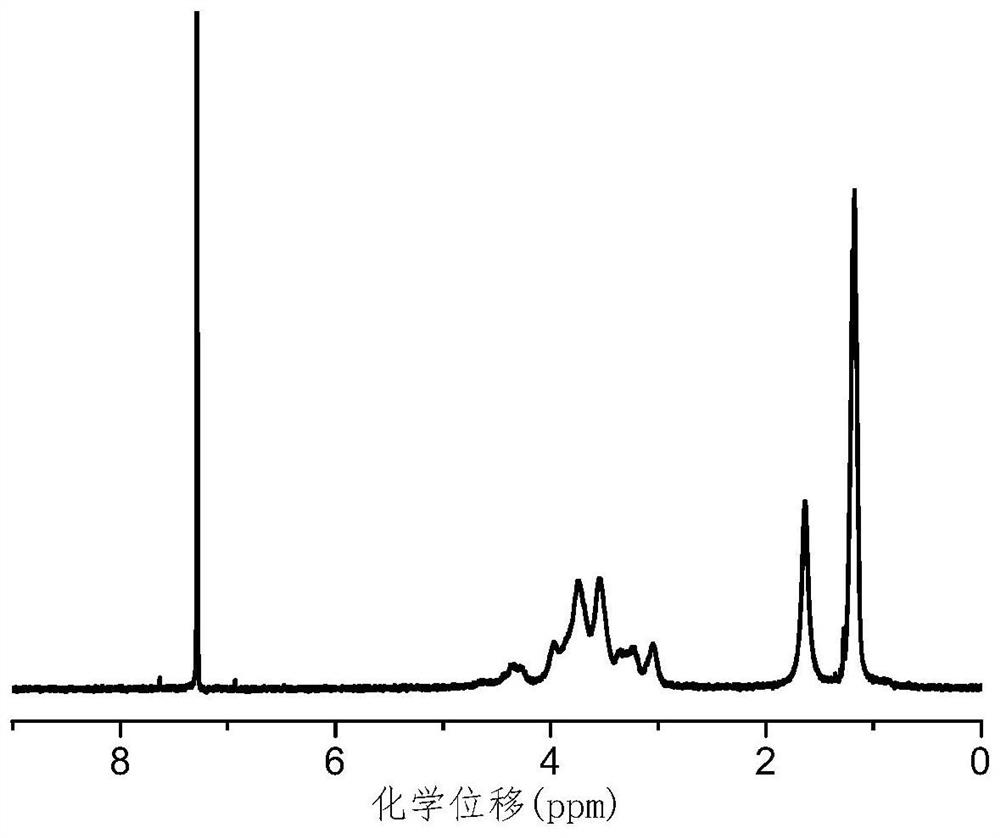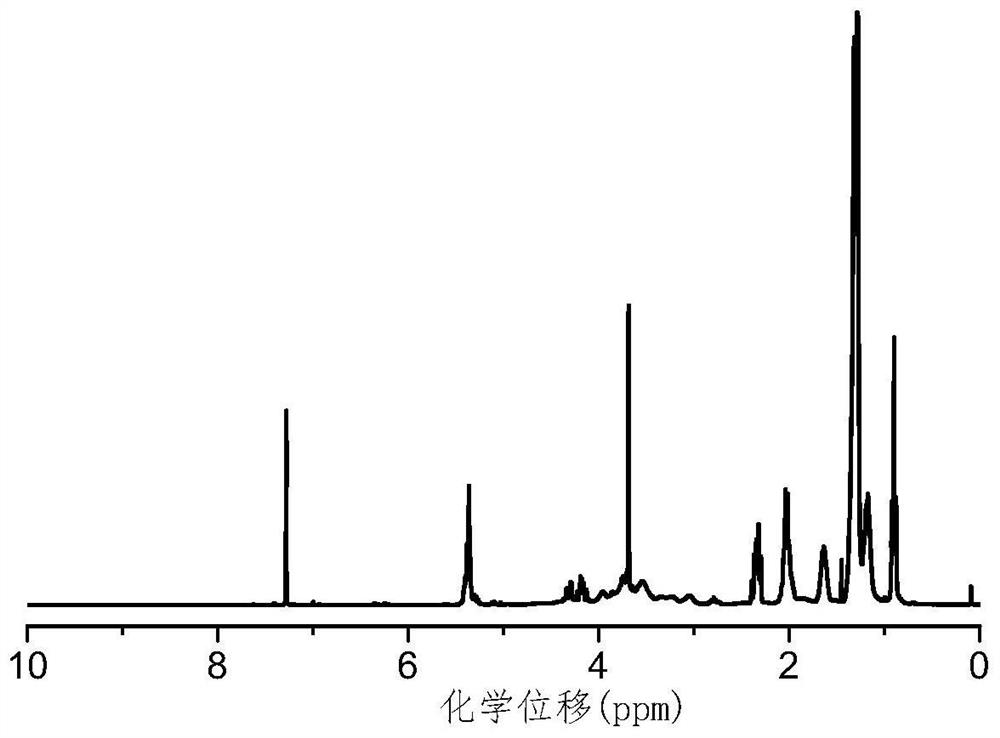A kind of ethyl cellulose-based self-healing polymer and preparation method thereof
A technology of ethyl cellulose and polymer, applied in the field of ethyl cellulose-based self-healing polymer and its preparation, can solve the problem of short self-healing time, poor mechanical properties of gel, poor thermal stability and solvent stability, etc. question
- Summary
- Abstract
- Description
- Claims
- Application Information
AI Technical Summary
Problems solved by technology
Method used
Image
Examples
Embodiment 1
[0021] 1 g of modified ethyl cellulose containing furan groups and 0.2 g of 4,4'-methylenebis(N-phenylmaleimide) were dissolved in 20 mL of tetrahydrofuran at room temperature, stirred for 20 min and sonicated for 10 min , poured the transparent solution into the mold, placed it at room temperature for 48 hours to evaporate the solvent, placed it in a vacuum drying oven at 100 °C for 12 hours, and then lowered it to room temperature to obtain an ethyl cellulose-based self-healing polymer. The mechanical properties of the obtained ethyl cellulose self-healing polymer are as follows: Figure 4 shown.
Embodiment 2
[0023] 1 g of modified ethyl cellulose containing furan groups and 0.4 g of 4,4'-methylenebis(N-phenylmaleimide) were dissolved in 20 mL of tetrahydrofuran at room temperature, stirred for 20 min and sonicated for 10 min , poured the transparent solution into the mold, placed it at room temperature for 48 hours to evaporate the solvent, placed it in a vacuum drying oven at 100 °C for 12 hours, and then lowered it to room temperature to obtain an ethyl cellulose-based self-healing polymer. The mechanical properties of the obtained ethyl cellulose self-healing polymer are as follows: Figure 4 shown.
Embodiment 3
[0025] Dissolve 1 g of modified ethyl cellulose containing furan groups and 0.6 g of 4,4'-methylenebis(N-phenylmaleimide) in 20 mL of tetrahydrofuran at room temperature, stir for 20 min and sonicate for 10 min , poured the transparent solution into the mold, placed it at room temperature for 48 hours to evaporate the solvent, placed it in a vacuum drying oven at 100 °C for 12 hours, and then lowered it to room temperature to obtain an ethyl cellulose-based self-healing polymer. The mechanical properties of the obtained ethyl cellulose self-healing polymer are as follows: Figure 4 shown.
PUM
 Login to View More
Login to View More Abstract
Description
Claims
Application Information
 Login to View More
Login to View More - R&D
- Intellectual Property
- Life Sciences
- Materials
- Tech Scout
- Unparalleled Data Quality
- Higher Quality Content
- 60% Fewer Hallucinations
Browse by: Latest US Patents, China's latest patents, Technical Efficacy Thesaurus, Application Domain, Technology Topic, Popular Technical Reports.
© 2025 PatSnap. All rights reserved.Legal|Privacy policy|Modern Slavery Act Transparency Statement|Sitemap|About US| Contact US: help@patsnap.com



